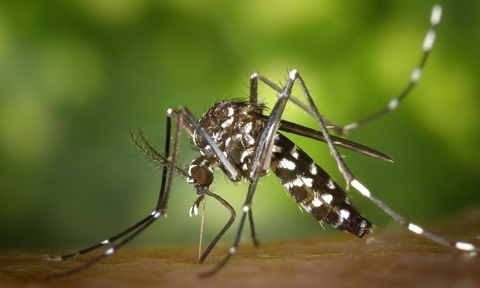Monitoring viruses in wastewater for early detection of COVID-19 outbreaks
NTU scientists join national effort to monitor presence of the SARS-CoV-2 virus in wastewater.

Wastewater testing being conducted in the laboratory. Image credit: SCELSE, NTU.
NTU scientists, in collaboration with researchers from other institutes and government agencies in Singapore, have developed an approach to detect the SARS-CoV-2 virus that causes COVID-19, and other viral pathogens in wastewater.
This non-intrusive surveillance of viral pathogens in wastewater strengthens NTU’s response to the COVID-19 pandemic and supports the wider national effort to monitor the prevalence and spread of SARS-CoV-2 in Singapore.
NTU is progressively implementing COVID-19 wastewater surveillance at its halls of residence.
“Studies have shown that viral pathogens such as SARS-CoV-2 can be detected in wastewater using sensitive molecular assays. Monitoring the presence of SARS-CoV-2 in community wastewater may help public health officials to catch infections early in the population,” says Assoc Prof Janelle Thompson of NTU’s Asian School of the Environment and the Singapore Centre for Environmental Life Sciences Engineering (SCELSE), who is leading the study.
The team also includes Prof Stefan Wuertz of NTU’s School of Civil and Environmental Engineering (CEE) and Prof Shane Snyder of NTU’s CEE and Executive Director of the Nanyang Environment and Water Research Institute (NEWRI).
“By detecting and quantifying SARS-CoV-2 in wastewater, we aim to provide an early warning of SARS-CoV-2 outbreaks. This method will allow infection clusters to be traced quickly if they arise, especially in densely populated communities such as residential halls where the virus may spread rapidly,” says Prof Wuertz, who is also a Deputy Director of SCELSE.
Other researchers who developed the wastewater surveillance approach are from Singapore-MIT Alliance for Research and Technology (SMART), National University of Singapore (NUS) and National Environmental Agency (NEA).
How SARS-CoV-2 is detected in wastewater
The detection of viral pathogens, such as SARS-CoV-2, in wastewater begins with the collection of wastewater samples from community sewers and wastewater treatment plants.

Wastewater samples are collected and transported to the laboratory to be analysed. Image credit: SCELSE, NTU.
In the laboratory, virus particles in the samples are collected either by filtering the wastewater, adding chemicals that cause the particles to clump together or spinning the wastewater in a centrifuge to concentrate viral material. Genetic material is then extracted from the collected viruses.

Spinning wastewater samples at high speeds in a centrifuge is one of the ways to separate viruses from wastewater. Image credit: SCELSE, NTU.
Using a molecular biology technique called quantitative polymerase chain reaction (qPCR), the researchers then determine the number of SARS-CoV-2 viruses in the samples, allowing them to raise the alarm if considerable numbers or numbers exceeding a certain threshold are found.

qPCR is a sensitive method that is used to detect the number of SARS-CoV-2 viruses in wastewater. Image credit: SCELSE, NTU.

An overview of COVID-19 wastewater surveillance, from wastewater collection to qPCR.
“Monitoring wastewater collected from small densely populated communities such as student residential halls paves the way towards detecting viral pathogens in wastewater from larger communities across Singapore,” says Prof Snyder.
The researchers hope that the detection of SARS-CoV-2 and other infectious pathogenic viruses in wastewater will help public health officials manage the disease in the community, reducing the impact of viral pandemics on Singapore in the future.







.tmb-listing.jpg?Culture=en&sfvrsn=82921582_1)